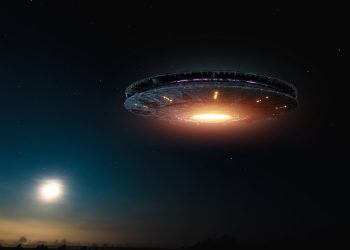The search for life beyond Earth is about to take a giant leap forward. NASA’s Habitable Worlds Observatory (HWO) is shaping up to be one of the most ambitious space telescopes ever designed, with a mission unlike any before it: to identify Earth-like planets around distant stars and analyze their atmospheres for potential signs of life.
This next-generation observatory builds on decades of astronomical discoveries, including those made by the James Webb Space Telescope (JWST), Hubble, and upcoming missions such as the Nancy Grace Roman Space Telescope. With cutting-edge technology and a focus on exoplanet habitability, HWO could finally answer one of humanity’s biggest questions: Are we alone in the universe?
The Evolution of Space Telescopes: From Hubble to HWO
As experts have explained, HWO isn’t an isolated endeavor, they see it as the culmination of years of innovation in astrophysics. Over the past two decades, scientists have launched multiple space observatories, each pushing the boundaries of our understanding:
- James Webb Space Telescope (JWST): Since its 2021 launch, JWST has provided groundbreaking insights into the earliest galaxies, the birth of stars, and the chemistry of exoplanet atmospheres.
- Euclid Space Telescope (2023): Designed to map the large-scale structure of the universe, Euclid is helping scientists understand the mysterious forces of dark matter and dark energy.
- SPHEREx & PLATO (2025–2026): SPHEREx will conduct an all-sky infrared survey of millions of galaxies, while PLATO will specialize in finding Earth-sized exoplanets orbiting distant stars.
- Nancy Grace Roman Space Telescope (2027): Known as the “Mother of Hubble”, Roman will revolutionize deep-space imaging with a field of view 100 times larger than Hubble’s.
Each of these missions plays a critical role in preparing for HWO, which will take exoplanet research to a whole new level.
What Makes the Habitable Worlds Observatory Different?
Unlike its predecessors, HWO is specifically designed to search for habitable worlds. While JWST and other telescopes have analyzed exoplanet atmospheres, they were not built primarily for detecting biosignatures—chemical signs of life. HWO will change that.
Key Features of HWO:
- Large Segmented Mirror: Expected to be 6 to 8 meters in diameter, allowing for extremely detailed observations.
- Advanced Coronagraph: This technology will block out the blinding light of stars, revealing the faint glow of planets in orbit.
- Multi-Wavelength Observations: HWO will study planets in visible, ultraviolet, and infrared light, providing a complete picture of their atmospheres.
- Biosignature Detection: The telescope will search for key gases like oxygen, ozone, and methane, which could indicate biological activity.
NASA astrophysicist Dr. Aki Roberge explains, “HWO will be capable of detecting planets that are not just Earth-sized, but truly Earth-like—worlds with atmospheres and conditions that could support life.”
A Super-Hubble for the 2030s
HWO is being designed to go far beyond exoplanet studies. Scientists expect it to redefine our understanding of the universe, tackling some of the biggest mysteries in cosmology:
- Dark Matter & Dark Energy: Studying the forces that shape the universe.
- Galactic Evolution: Observing how galaxies change over billions of years.
- Stellar & Planetary Formation: Analyzing how solar systems like ours emerge and evolve.
Although HWO is still in its early development phase, a significant milestone was achieved on August 1, 2024, when NASA established the Habitable Worlds Observatory Technology Maturation Project Office (HTMPO). This office will oversee the telescope’s design, technology testing, and mission planning.
By the late 2020s, NASA hopes to finalize the Mission Concept Review (MCR), moving HWO into Phase A development. If all goes as planned, the telescope could launch in the 2030s, ushering in a new era of space exploration.
What If HWO Finds Life?
The implications of this mission could be game-changing. If HWO detects a biosignature in an exoplanet atmosphere, it would mark one of the most profound discoveries in human history. As NASA researchers put it, “If life exists beyond Earth, HWO will be the telescope that finds it.”
Even if no biosignatures are detected, HWO will still provide invaluable insights into planetary diversity, helping scientists understand what makes a world truly habitable.
NASA is currently seeking scientists to join the HWO Community Science and Instrument Team (CSIT), a group tasked with refining the mission’s scientific goals. This is a crucial step toward defining what instruments the telescope will carry and how it will operate.
The next decade will be a defining moment for astrobiology. With JWST, Roman, and HWO working together, we may finally uncover the truth about life in the cosmos.











